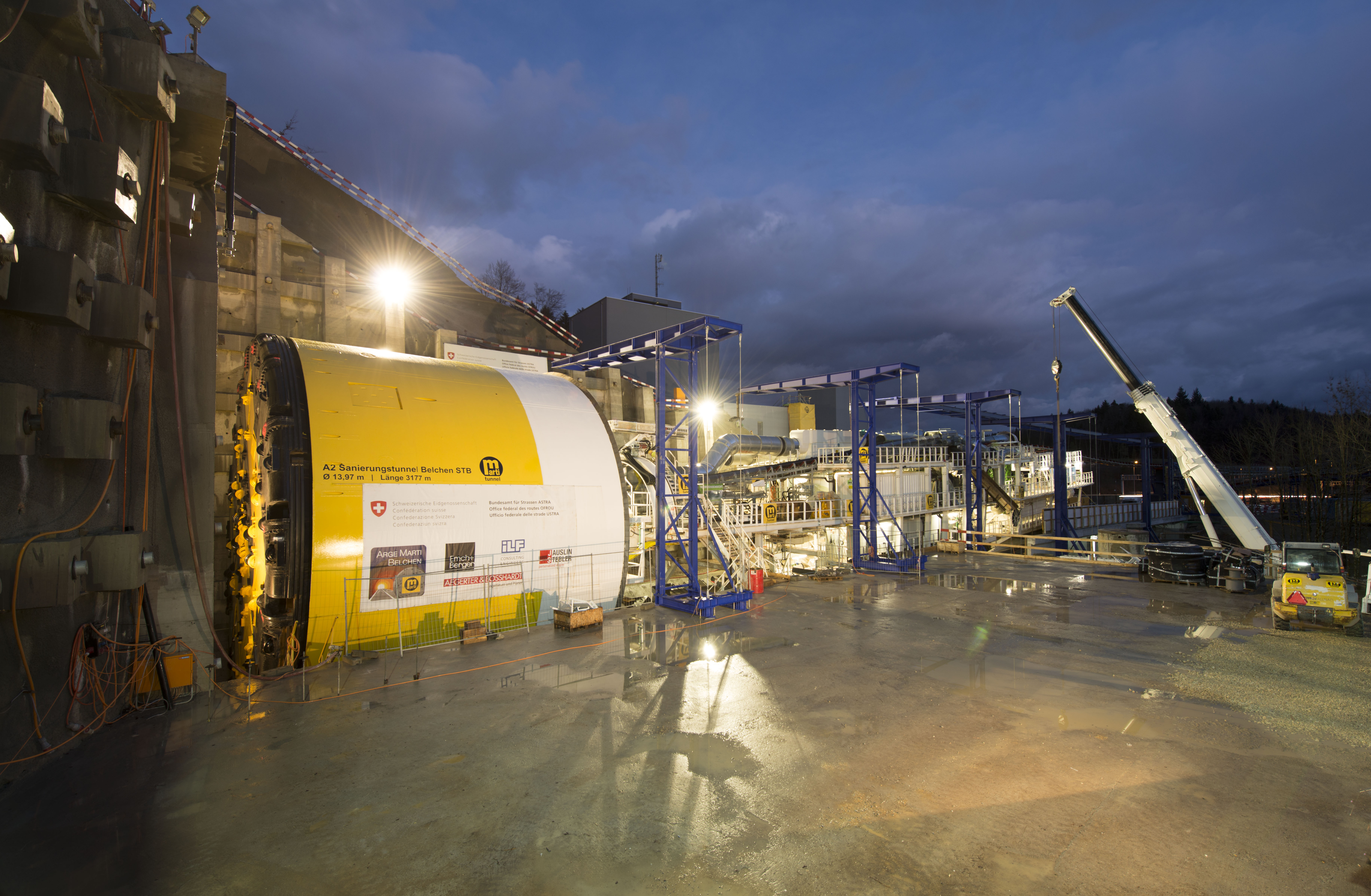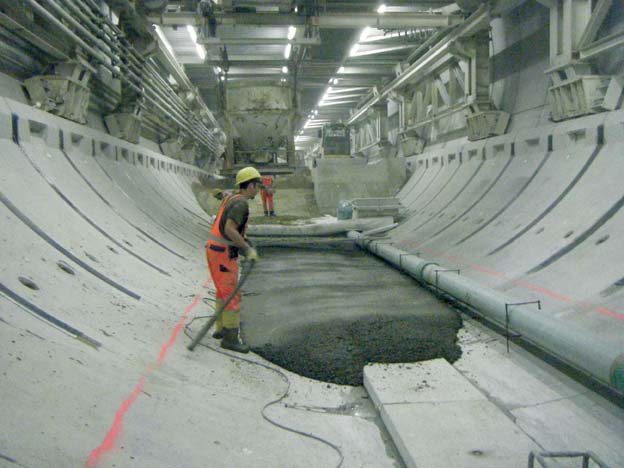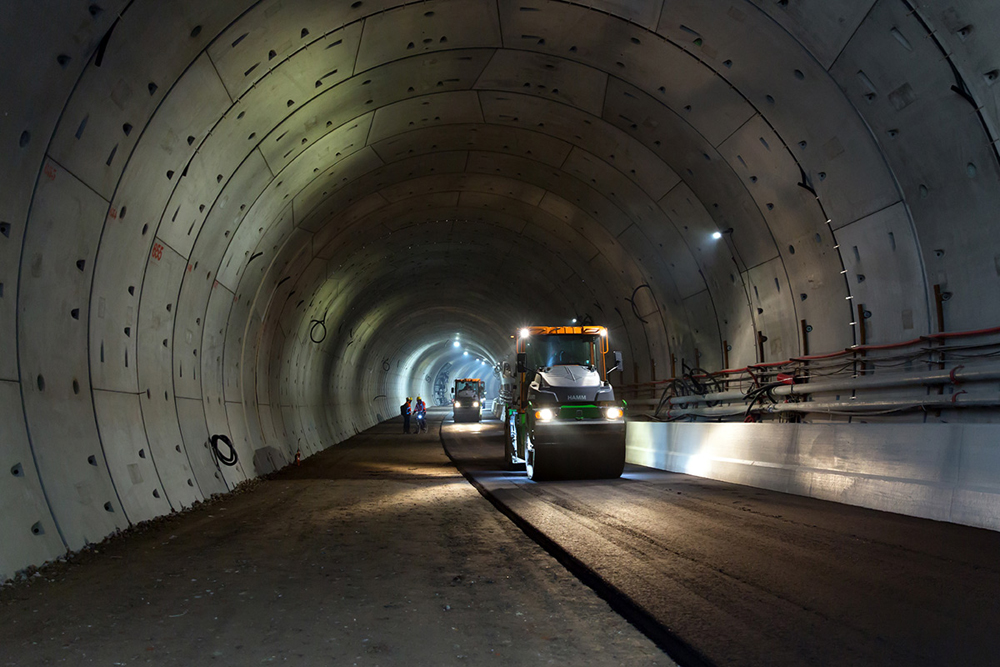
Construction work is now underway in Switzerland for the new Belchen Tunnel bore, a project that has resulted from the country’s long-term infrastructure planning. The building of this latest tunnel is important for Switzerland economically as it will deliver an upgraded link for a major transport infrastructure connection. When it is complete, the tunnel will form part of the vital A2 route between Basel, in the north-west of Switzerland, with Chiasso, in the south-east.
The A2 highway is an important international route for transport and commerce for Switzerland, and for Europe as a whole, as Basel lies close to the borders with France and Germany while Chiasso is on the border with Italy. A high percentage of heavy trucks use this route, carrying goods northwards from Italy and its neighbours, or southwards from France and Germany as well as many other countries. The tunnel itself links Eptingen in the canton of Basel-Country with Hägendorf in the canton of Solothurn. The route of the tunnel cuts through the Jura Mountains between Basel and Lucerne, with the busy A2 route carrying around 55,000 vehicles/day, of which 11% are heavy trucks.
There are two existing Belchen Tunnel bores at this point, with the first having been opened in 1966 and the second in the early 1970s, which should have been sufficient for transport needs. However the new tunnel was required for a number of reasons. A key issue was due to the fact that the original tunnels cross the Juragebirge, a ridge interspersed with large amounts of Gipskeuper, providing challenging geological conditions. Ground swelling and increasing rock pressures in this area have been caused by the tricky geology, and it is these that have damaged the tunnel support system, triggering concerns over the integrity of the 50-year-old structures.
As soon as this issue of structural integrity was identified, it was recognised that there was a serious need for repairs. However as the
A2 route is so important to transport, it was realised that any planned construction work could not impede traffic.
As a result, the Swiss Federal Roads Office, FEDRO/ASTRA, decided to commission the project for the new bore both to allow the improvement works to be carried out in the existing bores and to boost safety on the route over the longer term. The client for the project is FEDRO/ASTRA, with the work expected to cost €431 million (500 million Swiss francs).
The Swiss engineering firm Gruner was awarded the contract to handle the ecological site supervision work for the tunnel. The company has extensive experience in the tunnelling sector, having also worked on the Gotthard Tunnel.
The ventilation shafts for the existing twin-tube road tunnel were then upgraded between 2011 and 2013. Vibration caused by this work was monitored by Gruner, a factor which helped to ensure the safety of drivers using both tubes of the existing tunnel. The monitoring work used a wide array of sensors and also helped to prevent any damage to the tunnel’s traffic control and safety systems.
The need to install the new smoke removal system was an additional but also highly important factor in the series of works required to upgrade this stretch of Switzerland’s A2 highway connection.
The new smoke tunnels each measure 300m long and are located at the north and south portals of the link. These smoke tunnels have 18 sensors installed that are connected to Belchen Tunnel’s main control centre. The sensors supply real-time data and are monitored continuously by SensorServer software developed for the task by Gruner. In the event of an emergency, key staff members are alerted to by the system through SMS and email.
Phased work
This major project is being handled in distinct phases and once the new tunnel link opens to traffic, one of the existing bores will be closed and rebuilt. When this has been completed and reopened, the second bore will then be closed and reconstructed. With this approach, FEDRO/ASTRA will maintain traffic capacity on the A2 for the period of the works. When the refurbishment work has been completed, the new tunnel will carry northbound traffic, while southbound traffic will flow through an existing tube. The tunnelling team had a distinct advantage when brought onboard to carry out the excavation work for the new tube. Because the route already has two tunnel bores, the project team had a good understanding of the rock conditions that would be faced when driving the third bore. This knowledge was further backed up by exploratory drilling and other ground investigation work. The results showed that the conditions were suitable for the use of a large diameter tunnel boring machine (TBM), which would be able to
deliver a smooth bore within the tight timeframe required.
The TBM was designed and built for the project by the specialist firm
The TBM was brought to site in pieces, assembled and commissioned, with the huge machine being launched at the southern portal at Hägendorf on February 9th, 2016. The successful breakthrough was made at the northern portal near Eptingen on June 21st, 2017, three months ahead of schedule.
The TBM was operated by Marti Tunnelbau for the client, FEDRO/ASTRA and while it was operating, the huge machine removed some 550,000m³ of rock. Productivity was high and the TBM managed an average of 90m/week to complete its 3.2km drive in just 16 months, working a single 12-hour shift for five days/week. This was a substantial reduction in the time needed for this phase of the project as it had originally been expected that the TBM drive would require 19 months. Each daily advance varied from 7-18m, depending on the hardness of the rock being bored into given the variable geological conditions, but overall the TBM maintained a high rate of productivity and the average quantity of rock excavated/shift was around 1,900m3.
Of note is that the high driving rate for the TBM was achieved despite the challenging and varied geological conditions. The mountain range features a complex geology with irregular deposits of gypsum, clay, lime, dolomites and marl.
Environmental considerations were taken into account to meet the strict Swiss regulations and recycling was an important factor for the project. Around 15% of the rock excavated by the TBM was of sufficient quality that it could be re-used for construction works while the remainder was transported by conveyor to an old quarry site around 1.6km from the portal and used as fill. For the former quarry to be used in this way however did require some initial environmental work as the site had become a habitat for certain flora and fauna. In particular, a rare frog species had to be relocated.
As the TBM drove forward, the newly excavated tunnel was secured immediately afterwards with precast concrete segments to form a complete ring. The 2m-wide by 350mm-thick segments were supplied in a continuous flow using a six plus one installation pattern as the TBM progressed along its drive. The segments were bolted into place to ensure that they would remain secure.
The contractor utilised technology from VMT systems to ensure the correct fitting of the tunnel segments, which gave an outer diameter of 13.52m when installed. This work used various technologies including the TUnIS Navigation TBM, TUnIS Ring Sequencing and Automatic Tailskin Clearance Measurement System SLuM Ultra. This package optimises the ring installation process by measuring the ring position relative to the tailskin axis of the TBM and offers millimetre-accuracy. The TUnIS Navigation Office tool helps to monitor tunnel progress while the IRIS.tunnel package works with a local server and offers a comprehensive data management and analysis tool for tunnelling machine data. This steady flow of information allows the TBM to be continuously adjusted and optimised to the prevailing geological conditions, all of which made the works compliant with the latest standards.
With the segments in place, sealing, reinforcing and concreting was carried out to ensure the tunnel’s integrity, with the intermediate ceiling then being fitted. With the original bores having suffered structural issues over time due to the difficult geology, this knowledge has been used to ensure that the new bore will deliver a long working life with only general maintenance needs.
The fitting out work for the new bore includes the installation of fire detection and control systems, communications networks, ventilation, lighting, safety guardrails, traffic monitoring and control equipment and building the emergency shelters. This work should be completed in 2021 and the new tunnel will then be opened to traffic. When this happens, the first of the original tunnel bores will be closed to traffic so as to allow the link to be rebuilt. Addressing the structural issues caused by the increased rock pressures will be the first priority. Although the two Belchen Tunnel tubes were upgraded in 2003, this predated the new European tunnel regulations, so the latest safety systems will also be installed.
New safety regulations for road tunnels were introduced in Europe in the wake of three horrific fire disasters. The Tauern Tunnel in Austria and the Mont Blanc Tunnel connecting France and Italy both experienced major fires in 1999, followed by the Gotthard Tunnel in Switzerland in 2001. These major incidents all involved vehicle fires and resulted in multiple fatalities, 12 in the Tauern Tunnel, 39 in the Mont Blanc Tunnel and 11 in the Gotthard Tunnel, while there were many more injured. Following these horrendous disasters, four tests were carried out on the Runehamar road tunnel in Norway to simulate different types of vehicle fires. The collated data was then analysed, with the results being used to form new regulations intended to boost safety and prevent such disasters from happening again. The new European tunnel regulations have also had a strong influence worldwide, with similar requirements now also being made in the US, the Middle East, Latin America and Asia for example.
Many of the fatalities were from the inhalation of smoke from the fires, some of this being toxic, so improved ventilation was a number one priority. The tunnel structures had also been damaged by the fires, so it was clear that better heat protection was necessary so as to ensure structural integrity. With vehicle fires being a major concern, measures were also taken to ensure faster and more effective control of any incidents. Key points, in addition to the ventilation infrastructure to remove smoke, included the installation of better traffic and heat monitoring equipment, new fire control systems, new heat resistant tunnel cladding and also improved emergency rescue facilities. Following the introduction of these new regulations, all existing major road tunnel links in Europe are being retrofitted with new safety equipment. Meanwhile any new tunnels are being fitted with these latest systems.











